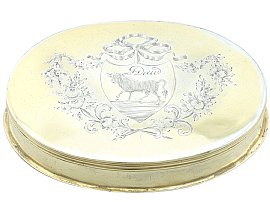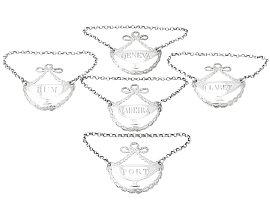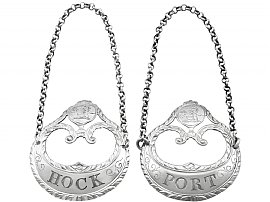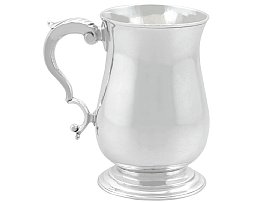Hester Bateman
Hester Bateman is one of the most famous and world-renowned female silversmiths. She is so renowned that her mark can double and often triple the value of a piece. She has a huge following of American collectors, which helps to maintain the high price and desirability of her pieces. Interestingly, her career as a silversmith was never actually intended. This possibly makes her skill and shrewd business instincts even more impressive!
Hester was born in 1708 and baptised later that year in London on the 7th of October 1708. Around the age of 15 Hester Nedem married John Bateman, a chain maker and wire drawer in central London in 1732. Together, they had five children: John, Peter, Jonathan, Letitia, and Ann. Their sons, Peter and Jonathan, were both doing their silversmith apprenticeships. When John died in 1760 however, he entrusted Hester with his small workshop practice. This suggests that she was already an accomplished silversmith. In order for a woman to become a member of the craft at this time she had to have lived with her husband for 7 years.
A year later, in 1761, Hester registered her own mark (HB) at the Goldsmith’s Hall as a small worker, progressing to the mark of a goldsmith by 1773. It is likely that some of her work may have been attributed to others and obliterated. This is because many potential buyers might have disregarded her work as it was crafted by a woman.
In 1761, Hester registered her own mark (HB) at the Goldsmith’s Hall as a smallworker, progressing to the mark of a goldsmith by 1773. Whilst she acted as an independent silversmith with her own registered hallmark, she was supplying pieces for other silversmiths who would overstamp with their marks. This is because many potential buyers might have disregarded her work as it was crafted by a woman.
By the mid-1770s Hester's work became more widely recognised. She started using modern techniques to create silver flatware, salvers, sauceboats, tea and coffee pots. Some of her most attractive and sought after pieces were wine labels/bottle tickets. Whilst practicing her craft she often opted to use the latest technologies so she could keep the costs down and create household silverware. Using punches she was able to create intricate pierced decoration and then apply her expertise to embellish pieces with bright cut engraved and bead ornamentation.
Despite the high reputation they had, not all of these children followed in the family business. It has been said that John was a recorded watch and clock-maker opposed to a silversmith and Ann married but did not carry the family trade to their new family. Their daughter Letitia, however, married Richard Clarke who was the master of her brothers Peter and Jonathan, and was a registered jeweller and goldsmith between 1790-1802. Letitia's daughter Sarah Clarke married Hester's apprintice, Crispin Fuller, and registered her own mark as a buckle maker in 1765.
Hester's two eldest sons became goldsmiths like their father and these two registered their own maker’s mark Peter & Jonathan Bateman in 1790. In 1790, Hester retired at the impressive age of 81. Sadly, in 1791 Jonathan died, leaving Peter Bateman (who had married Alice Beavoir) without his two key partners. He turned to his former partner’s widow and sister-in-law Anne Bateman; opposed to his sister and Hester’s daughter Ann Bateman, who married Richard Cottrill. Peter made her a partner in the business and in 1791 registering their joint mark. Within their partnership Hester Bateman passed away in 1794, with her only living children being Peter, Letitia and Ann.






